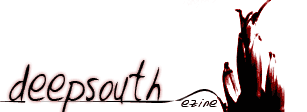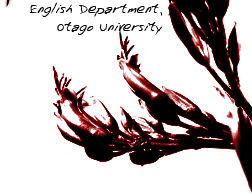While Thomas’s fondness for Christian imagery may appear to be in conflict with the mystical pantheism that is the substrate of his vision, his implied Christianity is in fact in perfect accord with it. The ecumenical aspect of Thomas’s imagination is sustained by a deeply felt humanist love for the world and man that manages to fuse his pantheism with his use of biblical rhetoric and imagery(6). For instance, in his poem ‘Author’s Prologue’ at the beginning of his collected poems, he figures his work as “my patch/ Work ark”, and himself as “the moonshine/ Drinking Noah of the bay”, which evinces his essentially religious, yet joyful and humourous, celebration of the world. Like Boethius, love seems to be not merely a metaphysical but a concrete physical bond that holds the world together, as in the final lines of the poem ‘Unluckily For a Death’: “O my true love, hold me./ In your every inch and glance is the globe of genesis spun,/ And the living earth your sons.” Yet there is also an intellectual logic to his adoption of Christian imagery: the central tenet of Christian doctrine, the Incarnation, is an implicit recognition of immanence in that God entered the physical world. The analogy of the poet to Christ and Adam is found throughout his oeuvre: as Moynihan writes, “The central figure of Collected Poems is an Adam-Christ-Poet composite—the representative of suffering, crucified humanity.(7)” In ‘Before I Knocked’ the lyric ‘I’ of the poem is Christ, and by extension, humanity, who is depicted as beginning as immanent within the universe before being born:
I who was shapeless as the water….
I knew the message of the winter,
The darted hail, the childish snow,
And the wind was my sister suitor;
Wind in me leaped, the hellborn dew;
My veins flowed with the Eastern weather;
The state of humanity in being like Christ “born of flesh and ghost” means that the extraordinary suffering of Christ on the cross is in fact the universal symbol of existence: “And flesh was snipped to cross the lines/ Of gallow crosses on the liver/ And brambles in the wringing brains.” Even though the poem seems to imply a transcendental dualism in seeing humanity as the commingling of immortal spirit with mortal body, this is in fact reconciled if the concept of immanence is taken to be primary. Indeed, the Holy Spirit, as in Rastafarianism, can be taken itself as an immanent process uniting the whole of humanity. The predominance of immanence in Thomas’s imagination can be clearly seen in the brief but strikingly beautiful two lines towards the end of ‘Unluckily For A Death’:
Both shall fail if I bow not to your blessing
Nor walk in the cool of your mortal garden
With immortality at my side like Christ the sky.
In the poem ‘This Bread I Break’ the subsumption of Christian doctrine by his naturalistic pantheism serves to make the concept of transubstantiation new in a way that it is similar to Eliot striving to come to the truths of Christianity through Eastern religious influences in The Waste Land. Here the act of making and eating one’s daily bread and drink is framed as a violent if necessary act of desecration that shows the unity of life and death:
This bread I break was once the oat,
This wine upon a foreign tree
Plunged in its fruit;
Man in the day or wine at night
Laid the crops low, broke the grape’s joy.
In the second stanza of the poem the tragedy of the inherent self-consuming nature of life intensifies to murder, even apocalypse:
Once in this wine the summer blood
Knocked in the flesh that decked the vine,
Once in this bread
The oat was merry in the wind;
Man broke the sun, pulled the wind down.
In the third stanza Thomas transmutes the tone of elegy into one of celebration through the recognition of the underlying unity and divinity of the world. This is set up by the shift of perspective at the beginning of the third stanza from a human lyric subject to an external one, signalled by the second-person:
This flesh you break, this blood you let
Make desolation in the vein,
Were oat and grape
Born of the sensual root and sap;
Implicitly, this must represent a divine perspective since it is seemingly transcendental, exterior to the processes of life and death. The final line functions as a stunning volta in revealing the speaker of the last stanza to be Christ, but Christ seen as the physical world itself: the endless death that life requires is refigured as an eternal Last Supper, a self-sacrifice taken upon by the world:
My wine you drink, my bread you snap.
The guilt of existence is redeemed through the concept of immanence whereby death is accepted as not only a necessary evil but a sacrament, a gift. Yet the reversion to the first-person perspective of the first two elegiac stanzas creates a certain ambiguity: the two lyric subjects are after all perhaps the same, and humanity both participates in and presides over the sacrament through the duality of Christ’s nature as both God and human.
The concept of immanence permeates the poetry of Dylan Thomas and is essential to an appreciation of the inherent religiosity of his vision. His naturalistic pantheism is both the cause and effect of a strict sensual epistemology, belying any attribution of irrationality or lack of intellect to him that may derive from his public image as a drunken bard. Metaphor allows Thomas to expand the microcosm of the lyric subject into the macrocosm of the cosmos, uniting making with nature and exploding the lyric subject into immanence. In doing so, he uses the uniqueness of the relation of identity created by metaphor, as opposed to that of comparison established my simile. His pantheism is achieved not to the exclusion of a Christian perspective; rather, the Incarnation of Christ embodies his use of metaphors of immanence, allowing the physical universe to be seen as a theophany. Pantheism thus becomes not a way of denying God but seeing everything as God.
(6) Thomas wrote in his ‘Author’s Note’ to the collected poems that “These poems…are written for the love of Man and in praise of God, and I’d be a damn’ fool if they weren’t”.
(7) Moynihan, p.229.
Bibliography
1. Ackerman, John. Dylan Thomas: His Life and Work. (St. Martin’s Press: New York, 1996).
2. Heaney, Seamus. Book Review of The Collected Letters of Dylan Thomas, published in The New Republic, August 11, 1986, v.105, p.33.
3. Moynihan, William T. The Craft and Art of Dylan Thomas. (Cornell UP: New York, 1966).
4. Thomas, Dylan. Collected Poems 1934-52. (J.M. Dent: London, 1952).
(c) Marcel Fernandes. All rights reserved.
page 1 2 3 4

